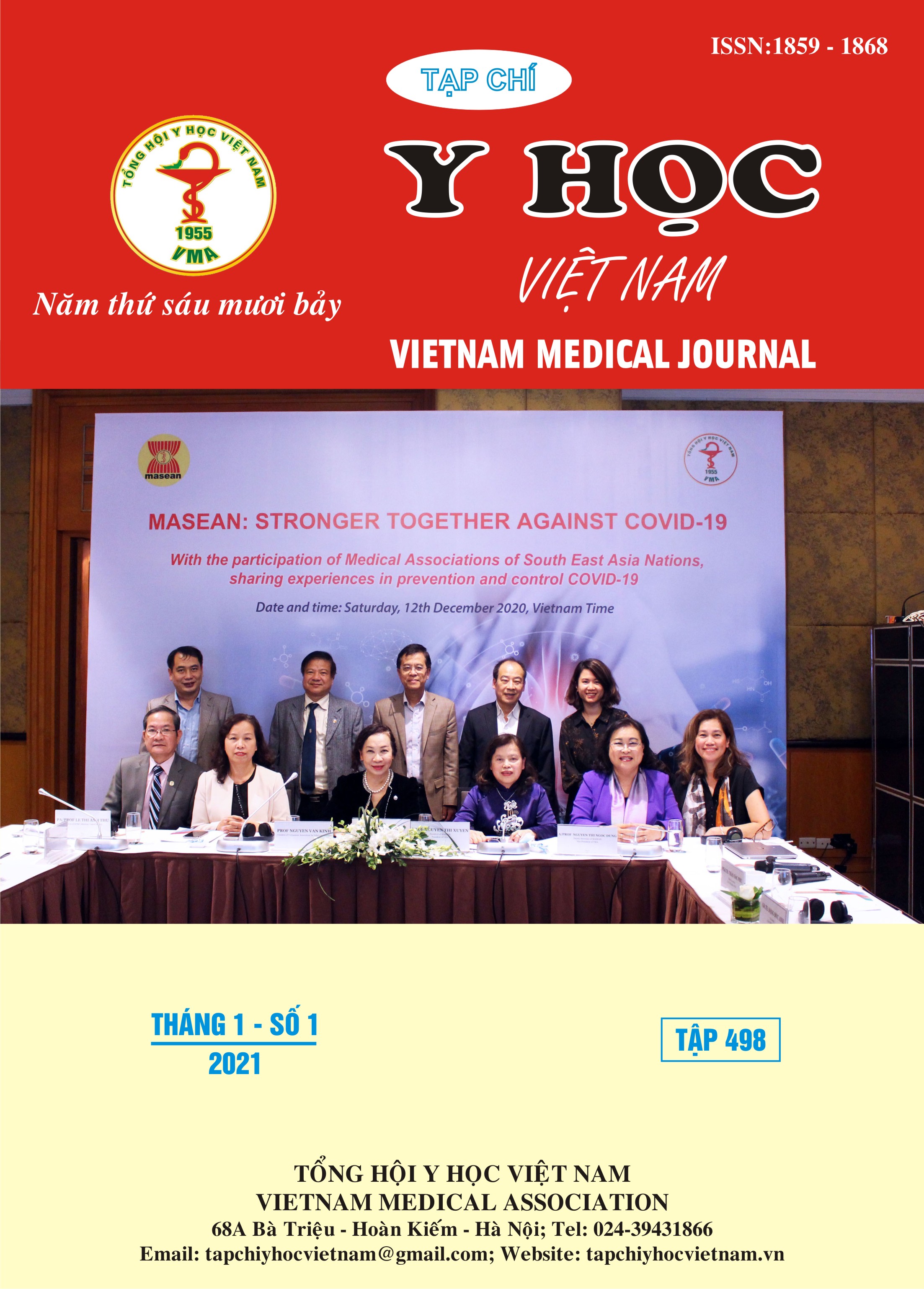PRODUCTION METHOD OF SIMULATED URINE UTILIZED IN URINALYSIS EXTERNAL QUALITY ASSESSMENT SCHEME
Main Article Content
Abstract
Objectives: To study methods of producing simulated urine samples used in external quality assessment (EQA) program. The homogeneity and stability of producing samples was evaluated according to ISO GUIDE 35:2017. Methods: Ten parameters (density (Specific Gravity-SG), pH, glucose (GLU), protein (PRO), urobilinogen (URO), bilirubin (BIL), nitrite (NIT), leukocyte (LEU), keton (KET), blood (BLO)) of normal urine sample were adjusted to produce abnormal urine sample with predetermined characteristics. The sets of producing samples were evaluated for pre-analysis and assessment of homogeneity then divided into 2 lots and stored at different temperature conditions (2 - 8°C and -20°C). The long-term stability is assessed for 3 months at 6 periods of time comprising: 1, 2, 4, 6, 8 and 12 weeks. Sort-term stability was evaluated in the shipping conditions after 5, 8 and 10 days deliver to participant laboratories. Results: Two batches of simulated urine samples have been produced and evaluated for homogeneity and stability. All sample lots were homogenous (p value >0.05). All parameters of simulated urine were stable in 3 months at -20ºC (p> 0.05). However, at 2-8ºC LEU and BIL were stable in 6 weeks, URO was stable in 8 weeks, the other parameters (SG, pH, GLU, PRO, NIT, KET and BLO) were stable in 12 weeks. For short-term stability, parameters LEU, BIL and URO were stable during 8 days, the other parameters were stable over 10 days of transporting condition (p-value> 0.05). Conclusions: The procedure of simulated urine production has completely developed. The producing samples were reached the criteria for homogeneity and stability. Simulated urine was stable 3 months in storage (-20ºC) and 8 days in shipping condition. The producing samples are suitable to apply for urinalysis EQA program.
Article Details
Keywords
external quality assessment, urinalysis, homogeneity, stability
References
2. Tiêu Chuẩn Quốc Gia TCVN 17043:2011 ISO 17043:2010 (2011), Đánh giá sự phù hợp - yêu cầu chung đối với thử nghiệm thành thạo, tr.13-23.
3. Tiêu Chuẩn Quốc Gia TCVN 9596:2013 ISO 13528:2003 (2013), Phương pháp thống kê dùng trong thử nghiệm thành thạo bằng so sánh liên phòng thí nghiệm, 56-61.
4. Vũ Quang Huy và các cộng sự (2018), "Nâng cao chất lượng xét nghiệm y học từ 2015 đến 6 tháng đầu 2018 qua các chương trình ngoại kiểm - Trung tâm Kiểm chuẩn chất lượng xét nghiệm y học Bộ Y tế tại Đại học Y Dược thành phố Hồ Chí Minh", Y học Tp. Hồ Chí Minh. 22(5), tr. 290 - 297.
5. Clinical and laboratory standards institute QMS01-A4 (2011), "Quality Management System: A model for Laboratory Services; Approved Guideline-Fourth Edition".
6. Brian Shmaefsky (1995), "Artificial Urine for Laboratory Testing", The American Biology Teacher. 57(7), tr. 428-430
7. Susan King Strasinger và Marjorie Schaub Di Lorenzo (2014), Urinalysis and body fluids, FA Davis.
8. Bộ Y Tế (2013), Thông tư 01 Hướng Dẫn Thực Hiện Quản Lý Chất Lượng Xét Nghiệm Tại Cơ Sở Khám Chữa Bệnh.
9. WHO, "Overview of External Quality Assessment (EQA)", tr. 1-8.


